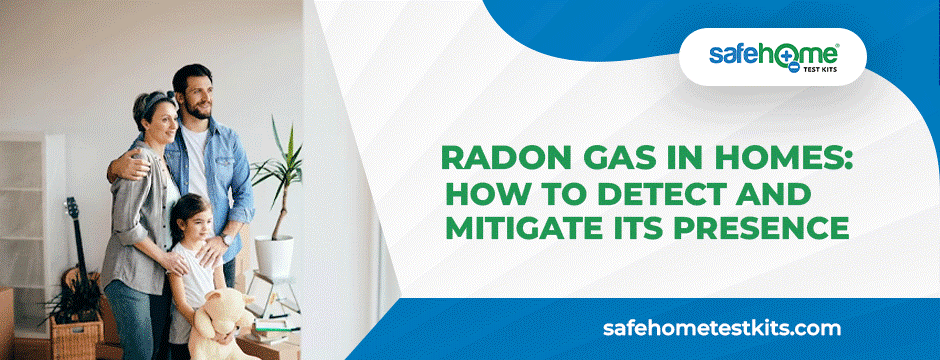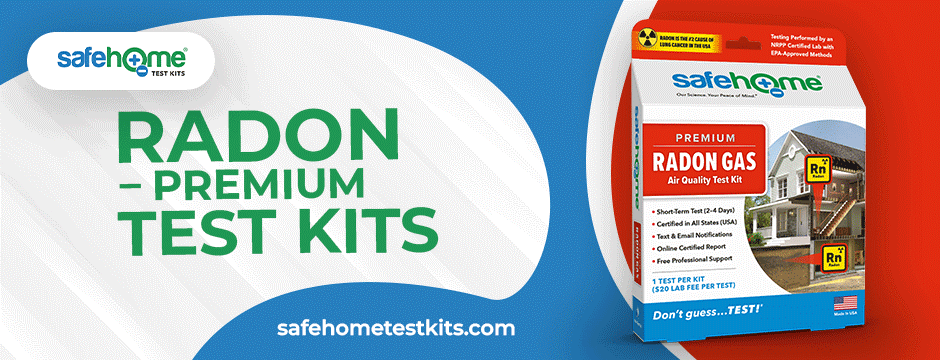Radon Gas in Homes: How to Detect and Mitigate Its Presence

Radon gas, a silent and invisible threat, could lurk in your home without your knowledge. This radioactive gas is a leading cause of lung cancer among non-smokers, making it imperative to understand its presence, detection, and mitigation. This comprehensive guide will delve into the world of radon gas, its risks, and, most importantly, how to detect and mitigate it effectively.
What is Radon Gas?
Radon is a colorless, odorless, and tasteless radioactive gas that occurs naturally from the decay of uranium in the soil. It can seep into your home through cracks in the foundation, construction material gaps, or well water. Radon is a noble gas, meaning it does not readily combine with other elements, making it highly mobile and capable of infiltrating your living spaces.
The Risks of Radon Gas Exposure
Exposure to radon gas is a serious health concern. According to the Environmental Protection Agency (EPA), radon is the second leading cause of lung cancer in the United States, responsible for approximately 21,000 lung cancer deaths each year. Even more concerning, radon-related lung cancer is often preventable through proper detection and mitigation measures.
The risk of developing lung cancer from radon exposure depends on various factors, including the radon concentration in your home, the duration of exposure, and whether you smoke. However, even non-smokers can be at risk, as radon is a significant carcinogen on its own.
Detecting Radon Gas in Your Home
Detecting radon gas is the first step in ensuring your home is safe. There are two primary methods for testing radon levels in your home: short-term testing and long-term testing.
Short-term testing:
Short-term tests typically last from 2 to 90 days and are designed to provide a quick snapshot of your home’s radon levels. This method is useful for initial screening. You can purchase short-term radon test kits from home improvement stores or hire a professional to perform the test. Ensure you follow the instructions precisely, as accurate results may occur without the guidelines.
Long-term testing:
Long-term tests accurately represent your home’s radon levels over an extended period, typically lasting more than 90 days. The EPA recommends this method for determining the need for mitigation. Long-term tests are more reliable because they consider fluctuations in radon levels due to changes in weather and seasons.
DIY vs. Professional Testing:
You can conduct radon tests yourself using DIY kits, which are readily available and affordable. These kits include detailed instructions for setting up the test and sending it to a laboratory for analysis. Alternatively, you can hire a qualified radon professional to ensure accuracy and precision. Professional testing often includes comprehensive inspections and monitoring.
Radon Testing Done Right With Professionals At Safe Home®
Alarming statistics reveal that radon is the leading cause of lung cancer among non-smokers in the United States, claiming the lives of over 20,000 people each year. Since radon is both odorless and tasteless, diligent testing is the only way to detect its presence. That’s where Safe Home® steps in to safeguard your well-being.
Our Radon – Premium Test Kits are specifically designed to provide precise and reliable results, offering you peace of mind. Each kit includes all the essential supplies needed for easy sample collection. The process is straightforward and user-friendly, ensuring that anyone can easily perform the test. Once your sample is collected and shipped to our lab, you can rest easy knowing that we take care of the rest.

What sets Safe Home® apart is our commitment to adhering to rigorous standards. Our NRPP-certified lab strictly follows EPA-approved methods for sample collection and testing. Homeowners, contractors, and home inspectors trust our expertise, as our lab maintains NRPP certification in all 50 states for radon testing. This certification ensures that our testing meets the stringent requirements for home inspections, mortgage approvals, and real estate transactions.
By choosing Safe Home®, you’ll receive a Radon Gas Air Quality Test Kit of Premium grade, offering a quick and accurate short-term test that spans 2 to 4 days. We aim to provide a seamless experience, offering text and email notifications and an online certified report. Our commitment to your well-being extends beyond the testing process. We provide free professional support, guiding you every step of the way, both during and after testing.
Radon Levels and Interpretation
Interpreting radon test results is crucial in determining the appropriate action. Radon levels are measured in picocuries per liter (pCi/L). The EPA has established specific guidelines for radon levels in homes:
- 0-2 pCi/L: Low radon levels, no immediate action required.
- 2-4 pCi/L: Moderate radon levels, consider mitigation.
- 4 pCi/L and above: High radon levels; immediate mitigation is strongly recommended.
It is important to remember that there is no “safe” level of radon exposure. The lower the radon levels in your home, the lower the risk of health problems.
Mitigating Radon Gas in Your Home
If your home’s radon levels exceed the recommended action level, it’s crucial to implement effective mitigation strategies. Radon mitigation techniques are designed to reduce radon concentrations to safer levels. Here are the most common methods:
Radon Mitigation Systems:
- Sub-slab depressurization system: This is the most common and effective method. A pipe is inserted through the foundation slab, and a fan creates negative pressure, drawing radon gas from beneath the home and venting it safely above the roof.
- Sump pit depressurization: If your home has a sump pit, it can be modified as a radon mitigation system. The fan draws radon gas from the sump pit and vents it outside.
- Block-wall depressurization: In homes with block walls, a system can be installed to draw radon gas from the hollow cores of the blocks and vent it outside.
Passive Mitigation Techniques:
- Sealing cracks and openings: Properly sealing cracks in the foundation and other entry points can help reduce radon infiltration. While not a standalone solution, this can be used with active mitigation systems.
- Crawl space ventilation: Encapsulating and ventilating crawl spaces can help reduce radon levels in some homes.
The mitigation system choice depends on your home’s design and the radon levels. It’s crucial to consult with a qualified radon mitigation professional to determine the most effective approach for your specific situation.
The Importance of Regular Testing
Regular testing is essential because radon levels can change over time due to various factors such as weather conditions, renovations, and maintenance. Even if you’ve previously mitigated radon in your home, it’s advisable to retest periodically to ensure levels remain within safe limits.
The EPA recommends testing every two years, and if any significant renovations or changes to your home occur, a radon test is also advised. Staying vigilant about radon gas in your home is a proactive way to protect your family’s health.

Conclusion
Radon gas is a hidden danger that can seep into your home, posing a significant health risk. Understanding how to detect and mitigate radon gas is crucial for safeguarding your family. Regular testing and, if necessary, proper mitigation measures can help reduce the risk of radon-related lung cancer.
Remember that radon is a threat that can be effectively managed with the right knowledge and actions. Don’t wait until it’s too late – take the necessary steps to protect your loved ones from the dangers of radon gas. Your home should be a place of safety, and addressing radon is a key part of ensuring that safety.


